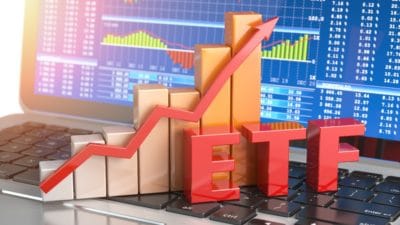When holding stocks in your portfolio, it’s a good idea to do so with the mentality that you’ll never sell those shares. This is because you’re actually a part owner in each company that you hold. In any other business situation, it wouldn’t be a good look if the business owners planned to leave as soon as they made any sort of profit. By holding stocks “forever,” you also give your positions adequate time to grow.
Of course, investors will have to sell shares at some point for one reason or another. Perhaps you need money for a down payment. Maybe you’re retired and need to pull money out of your account. Those are all reasonable reasons to sell shares. However, for the most part, I believe investors should have a “never sell” mentality. In this article, I’ll discuss three stocks that I’ll never sell.
This stock still has a lot of growth potential
I strongly believe that Shopify (TSX:SHOP)(NYSE:SHOP) could be a much bigger company by the end of the decade. In 2021, the American e-commerce market grew by 14.2%. However, despite that massive growth, online sales still only account for about 13% of the American retail industry. As consumers continue to shift towards online shopping, companies like Shopify could see sustained growth.
Shopify’s growth rate has slowed, there’s no denying that. However, it’s still growing at a very respectable pace. In the second quarter (Q2) of 2022, the company reported a 16% year-over-year increase in its quarterly revenue. Keep in mind that consumer spending is down this year, which makes that increase in revenue even more impressive. I believe that once consumer spending rebounds, the e-commerce industry and Shopify will continue to grow at more impressive rates.
I’m never selling this dividend stock
Even though I tend to gravitate towards growth stocks, there are some dividend stocks that I find very attractive. Bank of Nova Scotia (TSX:BNS)(NYSE:BNS) is one of those. This company is one of the Big Five, which is a group of companies that leads the Canadian banking industry. Of that group, Bank of Nova Scotia is the third largest in terms of revenue, assets under management, and market cap.
What I find attractive about Bank of Nova Scotia is its long history of paying dividends. The company first distributed a dividend on July 1, 1833. Since then, it has never missed a dividend payment. That represents 189 consecutive years of paying shareholders a dividend. In addition, the stock offers investors a forward dividend yield of 5.13%. As far as Canadian dividend stocks go, this is one of the best stocks around.
This company is a powerhouse
Finally, I see myself being a very long-term holder of Brookfield Renewable (TSX:BEP.UN)(NYSE:BEP) stock. This company operates a portfolio of facilities that can generate 21 gigawatts (GW) of renewable energy. It also has a development pipeline that could add 69 GW of generation capacity. That would cement Brookfield Renewable as one of the largest producers of renewable utilities in the world.
In terms of an investment, Brookfield Renewable is very attractive. Since its inception, the stock has generated an annualized return of 17%. This includes returns distributed as a dividend. Speaking of which, Brookfield Renewable has grown that dividend at a compound annual growth rate of 6% over the past 11 years. The world is slowly shifting towards renewable energy, and Brookfield Renewable aims to be a key player in the industry.







